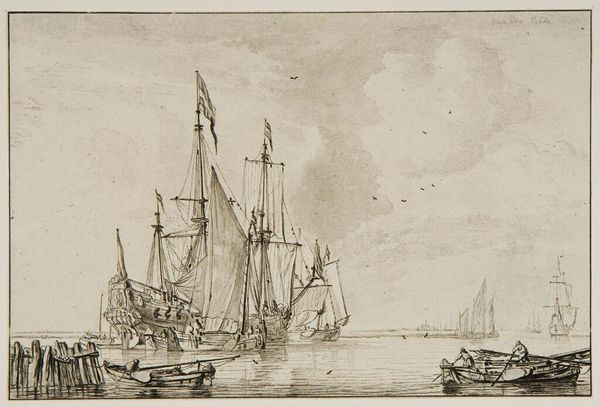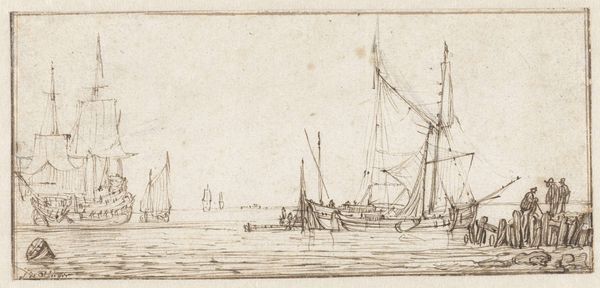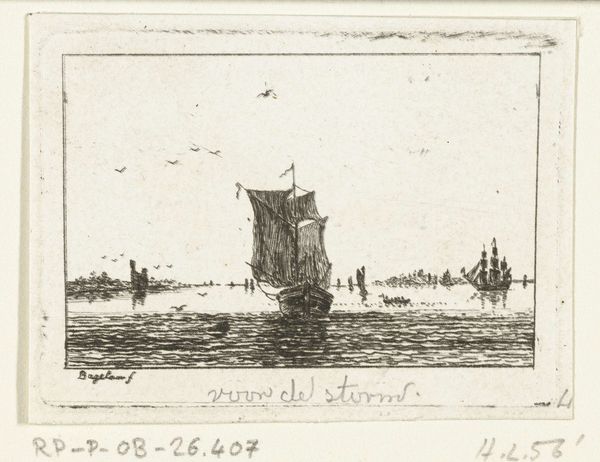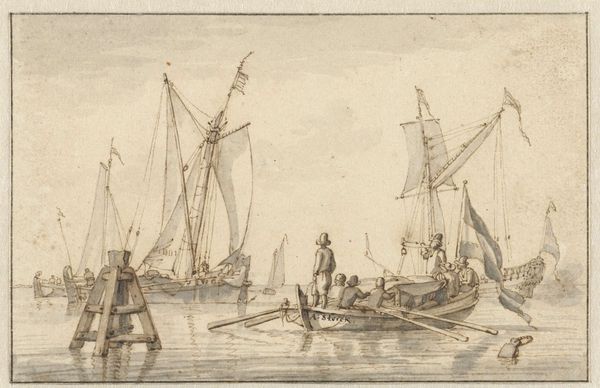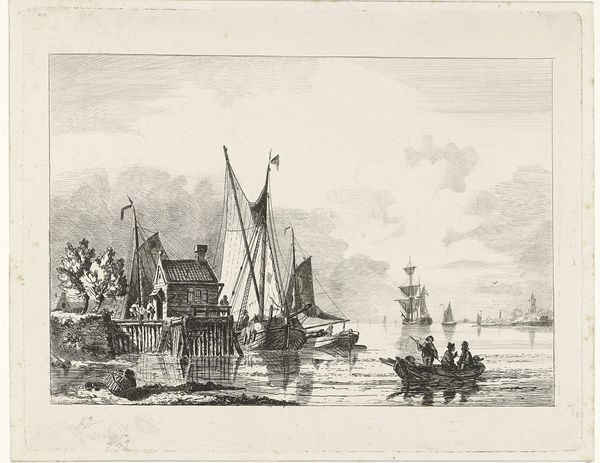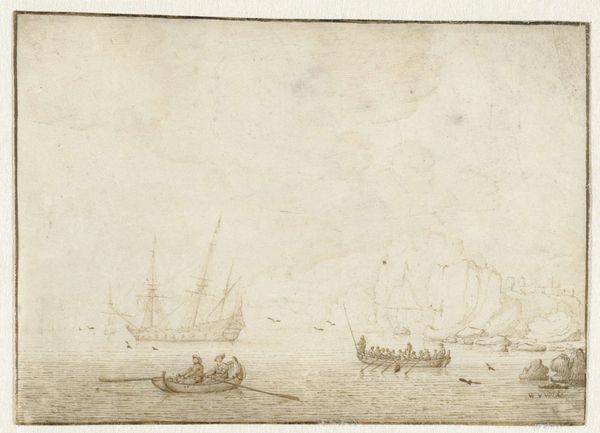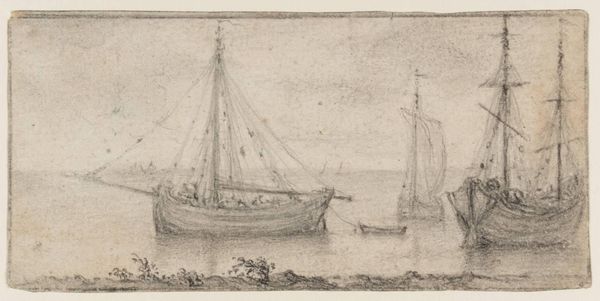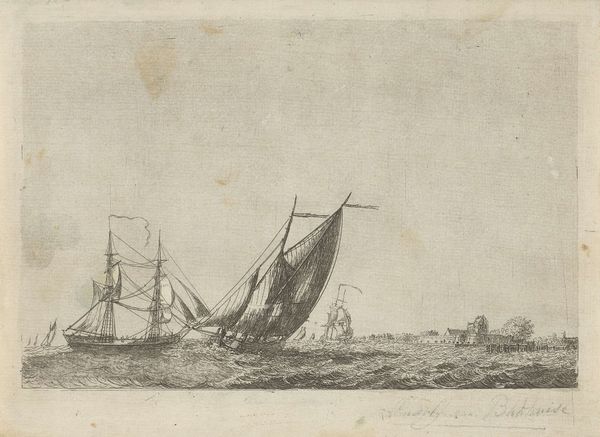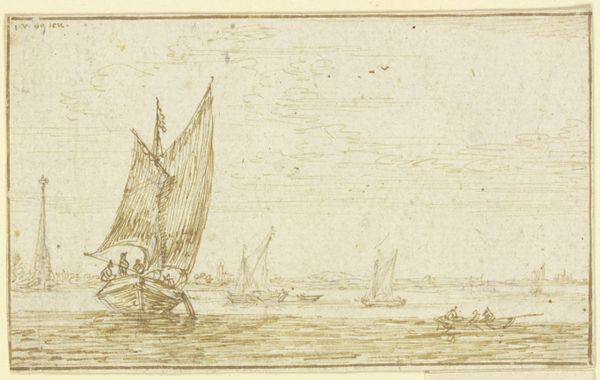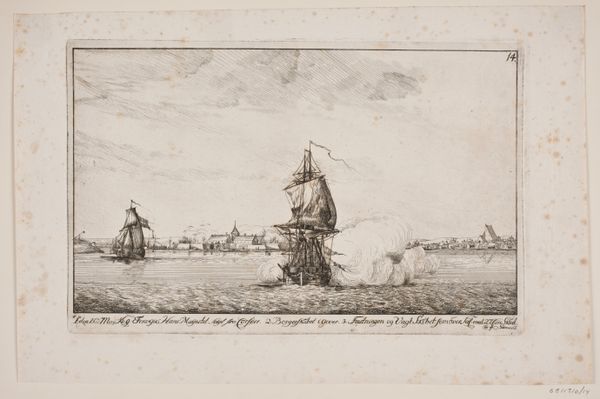
drawing, paper, ink
#
drawing
#
landscape
#
paper
#
ink
#
romanticism
Dimensions: height 52 mm, width 71 mm
Copyright: Rijks Museum: Open Domain
Editor: This is "Waterlandschap met zeilschepen," a landscape by Ernst Willem Jan Bagelaar, created sometime between 1798 and 1837, using ink on paper. It gives me a sense of vastness, but also solitude. What do you see in this piece? Curator: I see a seemingly tranquil scene, but beneath the surface lies a potent narrative about Dutch maritime power and its complicated legacy. These ships, rendered so delicately, represent not just trade, but also colonialism, exploitation, and the transportation of enslaved people. How does the artist's choice to portray this scene so serenely reconcile with these harsher realities? Editor: That's not something I considered initially. So, the calm water and distant cityscape might be masking a more sinister truth? Curator: Precisely. Think about the power dynamics at play. The ships signify Dutch economic and military dominance, fueled by unequal global exchanges. The detailed rendering, almost romanticized, aestheticizes a system built on profound human suffering. The swans in the foreground feel almost mocking in their innocence, don't they? Editor: They do now! Is Bagelaar commenting on that disparity, or complicit in it? Curator: That's the crucial question. Without explicit critique, we can infer complicity, or perhaps a naive acceptance of the status quo. Regardless, it compels us to interrogate the visual language of the era and unpack its ideological underpinnings. Consider how the choice of ink as a medium lends an archival, almost documentary, quality to the scene. Editor: So, it’s not just a pretty picture. Curator: Not at all. It’s a loaded image that encourages us to confront uncomfortable truths about history, representation, and the enduring power of visual narratives to shape our understanding of the world. It reminds me that beauty can be deceptive. Editor: I'll definitely view these landscapes differently now, appreciating their beauty but also questioning the stories they silently tell. Curator: Exactly! By interrogating the context and power dynamics embedded in these works, we can foster a more critical and inclusive dialogue with the art of the past.
Comments
No comments
Be the first to comment and join the conversation on the ultimate creative platform.

